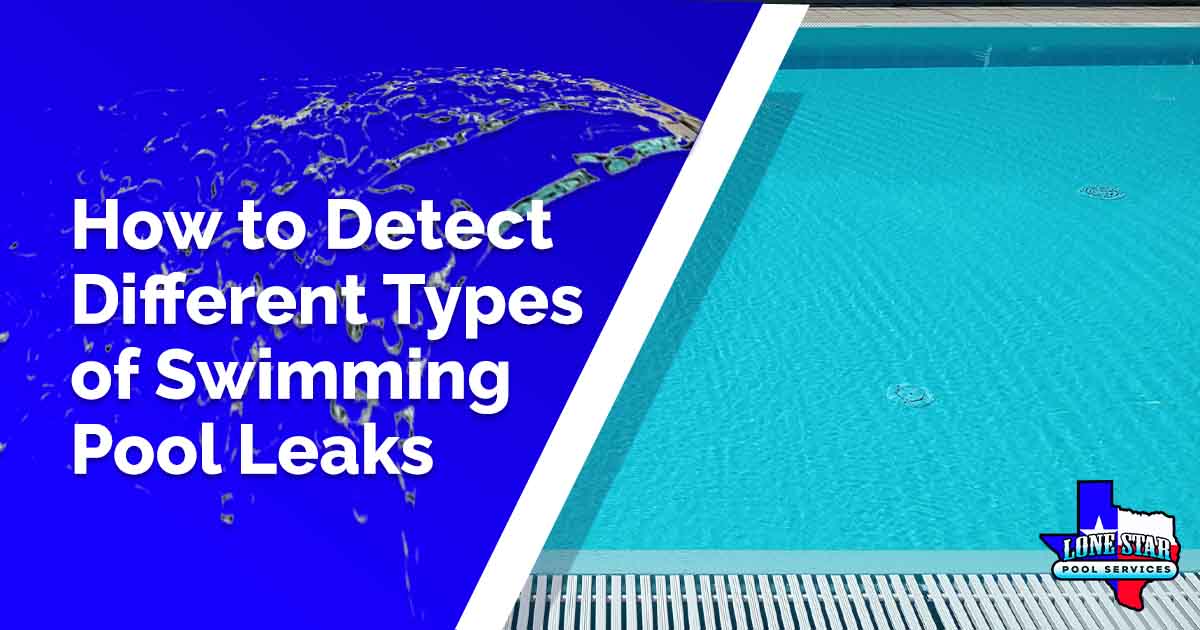A swimming pool is an ideal retreat in hot summer months. Not only is it refreshing, but it’s also a great way to spend time with your friends and family. A pool is also a great way to exercise. However, all of these fun activities take a back seat to fixing your pool if you are experiencing swimming pool leaks.
While all pools naturally lose or gain water due to evaporation, splashing, and rainfall, many also spring leaks. If you find that you’re regularly adding more than two inches of water to your swimming pool each week, then you may have swimming pool leaks. Overtime, these leaks can worsen and cause more damage. It’s best to track down the leak and repair it early on before your problem escalates.
Finding Swimming Pool Leaks
Pools are built to be watertight. However, sealants can deteriorate over time. It’s also possible that areas of your pool may settle, shift, or wear down. It’s not uncommon to have leaks at fittings in the plumbing or even right through the pool itself. Fixing these swimming pool leaks is important. Not only to save money on water, heating, and chemicals, but to prevent a bigger problem from developing. Swimming pool leaks can wash away the dirt supporting the swimming pool and the surrounding deck. This can result in a much bigger issue.
The problem with pool leaks is that they’re notoriously difficult to detect at times. In fact, many pool owners turn to the professionals when they suspect they have a leak in their swimming pool. However, if you’re not quite ready to call up a leak detection specialist then there are a few things you can try to attempt to locate the leak yourself.
Before you start hunting for leaks, it’s a good idea to measure evaporation. Do this by placing a bucket of water next to the pool. You’ll want to mark the water level on both the bucket and the swimming pool at the beginning of the test. After twenty-four hours, check the water levels again. If they lose the same amount of water, then you can write it off as evaporation. However, if the pool shows a greater loss then it’s likely you have a leak.
Detecting Swimming Pool Leaks Yourself
A big part of leak detection is figuring out how much water your pool is losing and when. Start by measuring the water level. Use tape or a pencil to mark the height of your water. In some pools, one inch of water is around 500 gallons.
Next, make a note if your pool equipment is on or off. If the equipment is on then the problem may be found on the pressure side of your plumbing. If the leak occurs when the pool equipment is off then it is more likely to be found on the suction side.
It’s possible that your swimming pool leaks all the time. This doesn’t necessarily mean the problem is not in your plumbing. However, it could mean the problem is with the body of the pool itself. Check for cracks or tears in your swimming pool’s shell. You should also examine the tile line and any underwater lights.
When looking for a leak, don’t forget to check inside of the skimmer. One of the most common swimming pool leaks occurs when the plastic skimmer separates from a concrete swimming pool. If you suspect a leak in the pool itself, you can easily test by dropping a few drops of test dye at the suspected leak location with all equipment turned off. If there is a leak, the dye will get pulled through the crack in the pool.
It’s also a good idea to inspect the pump, filter, valves, and heater. This means checking the equipment pad and the ground for moisture. Examine these areas with the pump on, and again with the pump off. Small drips aren’t much of a concern here. You’re looking for anything from a trickle to spraying water from any of these fixtures.
Signs of a Leak Surrounding the Pool
If you aren’t able to determine where the leak is originating then you may be able to at least detect where the water is going. A quick walk around your pool deck, swimming pool, and equipment pad allows you to check for eroded or wet areas. If your pool is on or near a hill, venture down the hill to check for excess water.
Occasionally, a leak will result in sinkholes in the sand or soil surrounding the pool so make sure the area is taped off to protect any guests. If you have nearby neighbors you may also want to alert them to the potential leak and ask if they’ve had an abundance of runoff water on their property.
Other Leak Detection Tips
Every pool owner’s worst fear is an underground plumbing leak. Though rare, these are very costly and messy to fix. An easy way to find out if the problem is in the pipes is to shut off the pump and plug each and every line. If the pool continues to leak then you know that the pipes aren’t the problem. However, if the leak stops then you’ll want to remove the plugs one by one to locate the problem.
In the event that you’re unable to locate the leak yourself, don’t panic. All you need to do is call an expert to inspect your swimming pool. Tell them what you’ve already checked and what you’ve observed so they know what you’ve already checked. They’re experts and know all the little places that swimming pool leaks like to hide.
Often times, locating the leak is the most difficult part of fixing it. Most swimming pool leaks are easy to fix once found. The expert team at Lone Star Pool Services is specially trained to locate and repair leaks. We also provide superior weekly maintenance for the pool owner who has a full and busy life.
Don’t let swimming pool problems bog you down. Call our professionals today.

